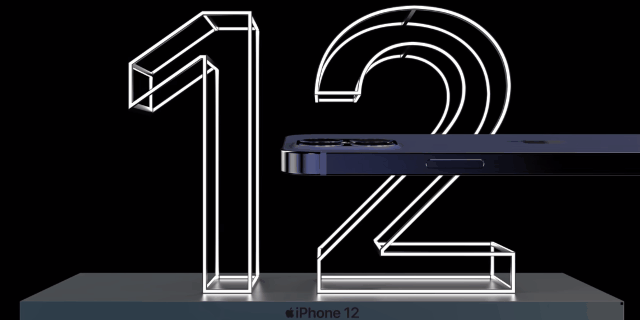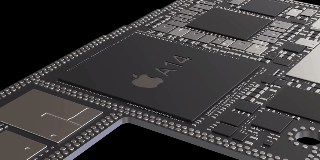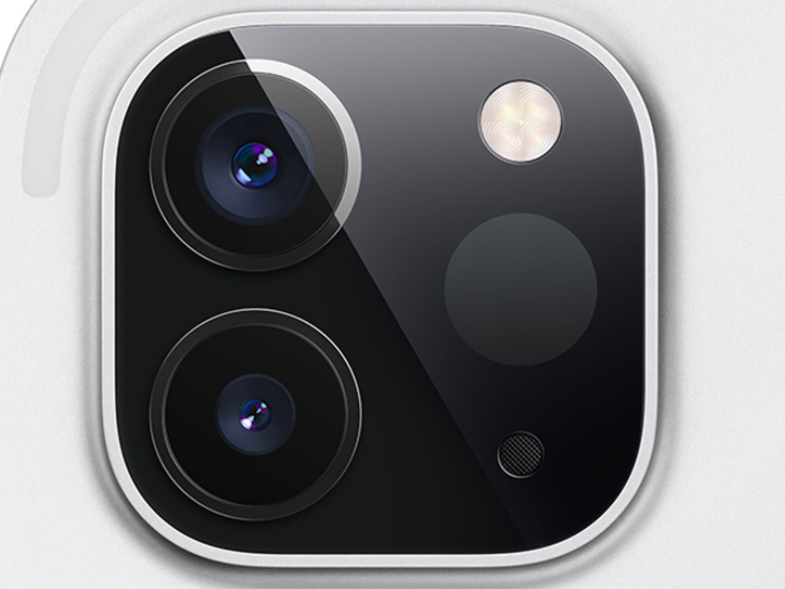iPhone 12 is coming! Will you buy?
Editor’s note: This article comes from the WeChat public account “New Zhiyuan” (ID: AI_era) , author: new Ji-won.

【New Zhiyuan Guide】 Apple is expected to release four new iPhones this year, two of which are named iPhone 12 Pro and iPhone 12 Pro Max. Apple’s next-generation “Pro” iPhone will use TSMC’s new 5nm chip, equipped with a three-shot, lidar scanner like the new iPad Pro. The screen and headphones will also change.
Recently, rumors about the iPhone 12 are again very popular, let us have a further understanding of Apple’s autumn new product release.
There is a foreign leader who specializes in Apple products, and posted a 12-minute video.
From the first generation iPhone to the upcoming iPhone 12, the software and services have been perfected. At present, the main focus is on performance, cameras and 5G.
A14 chip: TSMC ’s 5nm process performance is 15-inch MBP, and machine learning performance is a big leap
Although the Apple of the Cook era, it lacks the feeling of “big innovation” and adds a sense of “clear inventory”. But after all, the Apple company founded by Steve Jobs still has the “pioneer spirit”.
That’s why today’s laptops are like MacBooks, (true) wireless headphones are like earpods, tablets are like iPads, and mobile phones are like iPhones.

The A14 chip of the iPhone 12 is the first to use TSMC’s 5nm process technology. The 5nm process means a smaller size and more transistors.
It is reported that the A14 chip may haveThere are 12.5 billion transistors, even more than the computer CPU.

The results of the A14 chip running on Geekbench 5 have been reported before, with a single-core score of 1658 and a multi-core score of 4612.
If the running score is true, then the single-core running score of the A14 chip has been tied with Intel Core i7-8086K 4000 MHz (4 cores) in TOP 13! Who can say that this is not a miracle?

MacWord commentator Jason Cross even believes that the A14 ’s multi-core running score may be higher than rumors, enough to rival the 15-inch MBP. And there will be greater progress in the neural engine, and machine learning is expected to be at least twice as fast as A13.
5G is finally coming? Or will fully adopt Qualcomm 5G technology to abandon Intel, the antenna may be self-developed
Apple plans to use Qualcomm ’s 5G technology in the new iPhone by 2020. Qualcomm and Apple had previously been involved in a fierce legal battle, but reached a settlement in April 2019.

According to Apple ’s new product leader Guo Mingji, all iPhones are expected to use 5G technology in 2020, and all four new iPhones will use Qualcomm ’s X55 5G chip.
The X55 chip can provide a peak download speed of 7Gb / s and an upload speed of 3Gb / s, but this is only the theoretical maximum, and the actual speed will depend on the network conditions of the operator. This chip is Qualcomm’s first 5G chip and supports all major frequency bands.
There are two kinds of 5G networks: mmWave (fast transmission speed but rangeLimited) and below 6GHz (the transmission speed is slower but the range is wider). Different countries support different specifications, which will lead to differences in speed and stability.

mmWave 5G technology may be more suitable for major cities and densely populated urban areas, while 5G networks in rural and suburban areas will use slower technologies below 6GHz.
Analysts believe that in major markets such as the United States, the United Kingdom, Australia, Canada and Japan, iPhone, mmWave and sub-6GHz solutions will be supported, while in some other countries, Apple may only provide iPhones below 6GHz.
5G technology is still in the early stages of development, but by the time Apple releases a new iPhone, 5G networks of major US carriers will cover most areas.
antenna
But Apple is planning to design its own antenna module. It is rumored that Apple is “indecisive” in the design of Qualcomm antennas because Qualcomm antennas conflict with Apple ’s design philosophy.
Wi-Fi
The new iPhone may support a new Wi-Fi standard IEEE 802.11ay, which is an advanced technology of 802.11ad, which uses 60GHz spectrum, can triple the bandwidth, and increase four transmission / reception flow.
High-end models will be equipped with a time-of-flight camera, go online with augmented reality, and remove the screen “bangs”
Apple has made major changes to the rear camera system in the 2019 iPhone series, and the iPhone 11 Pro and Pro Max use a three-lens setting.

There are rumors that some new iPhone models launched in 2020 will be equipped with 3D cameras, which sounds like Apple ’s LiDAR scanner feature added to the 2020 iPad Pro models.
The LiDAR scanner in the iPad Pro uses reflected light to measure the distance from the sensor to surrounding objects, up to 5 meters. It can work indoors and outdoors, and can basically map the environment around the device on the photon level with nanosecond speed.
The depth frame in iPadOS can combine the depth measured by the LiDAR scanner, the data from the camera and the data from the motion sensor to create an understanding of the entire scene, greatly enhancing the functionality of AR, the 3D camera uploaded by the iPhone May be similar to this.
Two high-end iPhones launched in 2020 may use a new time-of-flight rear camera.
Like the 2019 iPhone series, it is expected that the 2020 iPhone will use different camera technologies.
Analysts at UBS believe that Apple is developing high-end 6.7 and 6.1-inch iPhones with triple-lens cameras, while low-end 5.4 and 6.1-inch iPhones may have only two cameras.
Higher-end iPhone 12 models may have an improved telephoto lens with a 3x optical zoom (as opposed to the current 2x optical zoom). In addition, Apple also plans to improve Smart HDR to get better low-light performance.
In 2020, at least one new iPhone will use a smaller front camera lens to improve the ratio of the screen to the frame, and ultimately make the front “Liu Haier” smaller. Barclays analysts believe that the iPhone 12 will be equipped with an updated TrueDepth camera system.

An analyst at Credit Suisse said that Apple will launch at least one new iPhone without bangs or Face ID in 2020, but rely on the fingerprint sensor below the screen to unlock.

Thinner and more power-saving screen, no longer randomly give wired headphones to promote AirPods sales
screen
Apple is testing the OLED display of Chinese company BOE Display, which produces LCDs for Apple ’s iPad and MacBook. Apple has been using Samsung’s OLED displays in recent OLED iPhones, and is expected to continue to do so.
The future iPhone may use Apple Watch ’s low-power LTPO display technology, which consumes 15% less power than Apple ’s current LTPS.
Some of the new iPhones expected to be launched in 2020 will use Samsung’s technology called Y-OCTA. Let the touch screen circuit be directly patterned on the OLED panel, which can achieve a thinner display and lower production costs.
There are rumors that Apple is considering a 120Hz ProMotion display for higher-end iPhone Pro models. The working principle may be similar to ProMotion iPad Pro. The display is dynamically adjusted according to the movement of the content on the screen to achieve smooth scrolling Higher response speed and smoother movement.
Headphones
Apple ’s new product leader Guo Mingchi believes that the new generation of iPhones will no longer give away wired headsets to force the increase in AirPods sales.
Price
Rumors suggest that iPhone 12 pricing may start as low as $ 649 this year, which will be Apple ’s lowest price for OLED iPhones. More predicted prices are as follows:
-
5.4-inch iPhone 12: $ 649
-
6.1-inch iPhone 12: $ 749
-
6.1-inch iPhone 12 Pro: $ 999
-
6.7-inch iPhone 12 Pro Max: $ 1,099
So, will you buy it?